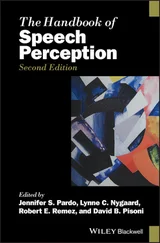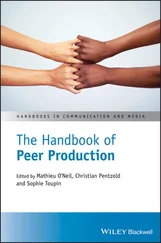Avoidant people’s social withdrawal is also manifested in recent studies that have assessed feelings of nostalgia (the emotional mechanism that activates a need for social connectedness and memories of emotional closeness; Wildschut et al., 2006). According to Wildschut et al. (2006), nostalgia is activated by loneliness, and the experience of nostalgia tends to reduce loneliness and increase perceptions of emotional connection to others. In three studies, Wildschut et al. (2010) found that feelings of nostalgia are inhibited by attachment‐related avoidance, which is compatible with the idea that avoidant people prefer social withdrawal over emotional connectedness. In addition, an experimental induction of relational isolation increased reports of nostalgia among low‐avoidant participants, but not among high‐avoidant participants.
In two additional studies, Wildschut et al. (2010) found that more avoidant people benefited less from nostalgia: An experimental induction of nostalgia in the laboratory (as compared with a control condition) increased perceptions of social connectedness and interpersonal competence, but only among low‐avoidant participants. Moreover, several studies have found that an experimental induction of nostalgia increased approach‐oriented social intentions/goals to connect with others or to pursue a romantic relationship when avoidant attachment was low but not when it was high (e.g., Abeyta et al., 2019; Juhl et al., 2012). Abeyta et al. (2015) content analyzed nostalgic narratives and found that the narratives of more avoidant people included less attachment‐related content.
The experience of being alone, like the experience of being together, is an enticing topic for personality‐social psychologists interested in attachment. In this chapter, we have proposed and briefly explored an attachment perspective on solitude that follows Rubenstein and Shaver's (1982) early distinction between loneliness and positive solitude, with the former being more common in people with an insecure attachment orientation, and the latter being a healthy state sustained by a sense of security. However, most of the research on attachment and solitude has focused largely on insecure people’s heightened feelings of loneliness and have overlooked the possibility that secure individuals might be most comfortable with solitude, and might be able to pursue it and benefit from it in healthy, creative ways. That possibility has recently been studied by Gal (2019), as summarized here, but we need more systematic research on this topic and on the ways in which a sense of security provides a basis for developing a capacity to be alone and savor moments of solitude while maintaining a healthy balance between aloneness and togetherness.
1 Abeyta, A.A., Nelson, T.A., & Routledge, C. (2019). The pushes and pulls of the past: the effects of attachment‐related avoidance and nostalgia on approach‐oriented social goals. Personality and Individual Differences, 149, 200–208.
2 Abeyta, A.A., Routledge, C., Roylance, C., Wildschut, T., & Sedikides, C. (2015). Attachment‐related avoidance and the social and agentic content of nostalgic memories. Journal of Social and Personal Relationships, 32, 406–413.
3 Adamczyk, K. & Bookwala, J. (2013). Adult attachment and single vs. partnered relationship status in Polish university students. Psychological Topics, 22, 481–500.
4 Aikins, J.W., Howes, C., & Hamilton, C. (2009). Attachment stability and the emergence of unresolved representations during adolescence. Attachment & Human Development, 11, 491–512.
5 Ainsworth, M.D.S. (1991). Attachment and other affectional bonds across the life cycle. In C.M. Parkes, J. Stevenson‐Hinde, & P. Marris (Eds.), Attachment across the life cycle (pp. 33–51). New York: Routledge.
6 Ainsworth, M.D.S., Blehar, M.C., Waters, E., & Wall, S. (1978). Patterns of Attachment: Assessed in the Strange Situation and At Home. Hillsdale, NJ: Erlbaum.
7 Al‐Yagon, M., Kopelman‐Rubin, D., Brunstein Klomek, A., & Mikulincer, M. (2016). Four‐model approach to adolescent‐parent attachment relationships and adolescents' loneliness, school belonging, and teacher appraisal. Personal Relationships, 23, 141–158.
8 Bachem, R., Levin, Y., & Solomon, Z. (2019). Trajectories of attachment in older age: interpersonal trauma and its consequences. Attachment & Human Development, 21, 352–371.
9 Bailey, C., Abate, A., Sharp, C., & Venta, A. (2018). Psychometric evaluation of the Inventory of Interpersonal Problems 32. Bulletin of the Menninger Clinic, 82, 93–113.
10 Baldwin, M.W., Fehr, B., Keedian, E., Seidel, M., & Thompson, D.W. (1993). An exploration of the relational schemata underlying attachment styles: self‐report and lexical decision approaches. Personality and Social Psychology Bulletin, 19, 746–754.
11 Bartholomew, K. & Horowitz, L.M. (1991). Attachment styles among young adults: a test of a four‐category model. Journal of Personality and Social Psychology, 61, 226–244.
12 Bartz, J.A., Tchalova, K., & Fenerci, C. (2016). Reminders of social connection can attenuate anthropomorphism: a replication and extension of Epley, Akalis, Waytz, and Cacioppo (2008). Psychological Science, 27, 1644–1650.
13 Beck, L.A., Pietromonaco, P.R., DeVito, C.C., Powers, S.I., & Boyle, A.M. (2014). Congruence between spouses’ perceptions and observers’ ratings of responsiveness: the role of attachment avoidance. Personality and Social Psychology Bulletin, 40, 164–174.
14 Berlin, L.J., Cassidy, J., & Belsky, J. (1995). Loneliness in young children and infant‐mother attachment: a longitudinal study. Merrill Palmer Quarterly, 41, 91–103.
15 Bippus, A.M. & Rollin, E. (2003). Attachment style differences in relational maintenance and conflict behaviors: friends’ perceptions. Communication Reports, 16, 113–123.
16 Bowker, J.C. & Raja, R. (2011). Social withdrawal subtypes during early adolescence in India. Journal of Abnormal Child Psychology, 39, 201–212.
17 Bowlby, J. (1973). Attachment and Loss: Vol. 2. Separation: Anxiety and Anger. New York: Basic Books.
18 Bowlby, J. (1980). Attachment and Loss: Vol. 3. Sadness and Depression. New York: Basic Books.
19 Bowlby, J. (1982). Attachment and Loss: Vol. 1. Attachment (2nd ed.). New York: Basic Books. (Orig. ed. 1969).
20 Bowlby, J. (1988). A Secure Base: Clinical Applications of Attachment Theory. London: Routledge.
21 Brassard, A., Lussier, Y., & Shaver, P.R. (2009). Attachment, perceived conflict, and couple satisfaction: test of a mediational dyadic model. Family Relations, 58, 634–646.
22 Brennan, K.A., Clark, C.L., & Shaver, P.R. (1998). Self‐report measurement of adult romantic attachment: an integrative overview. In J.A. Simpson & W.S. Rholes (Eds.), Attachment Theory and Close Relationships (pp. 46–76). New York: Guilford Press.
23 Brumbaugh, C.C. & Fraley, R.C. (2006). Transference and attachment: how do attachment patterns get carried forward from one relationship to the next? Personality and Social Psychology Bulletin, 32, 552–560.
24 Buchholz, E.S. (1997). The Call of Solitude: Alonetime in a World of Attachment. New York: Simon & Schuster.
25 Buchholz, E.S. & Catton, R. (1999). Adolescents' perceptions of aloneness and loneliness. Adolescence, 34, 203–213.
26 Burger, J.M. (1995). Individual differences in preference for solitude. Journal of Research in Personality, 29, 85–85.
27 Cassidy, J. & Kobak, R.R. (1988). Avoidance and its relationship with other defensive processes. In J. Belsky & T. Nezworski (Eds.), Clinical Implications of Attachment (pp. 300–323). Hillsdale, NJ: Erlbaum.
28 Cassidy, J., Stern, J.A., Mikulincer, M., Martin, D.R., & Shaver, P.R. (2018). Influences on care for others: attachment security, personal suffering, and similarity between helper and care recipient. Personality and Social Psychology Bulletin. 44, 574–588.
Читать дальше




![О Генри - Справочник Гименея [The Handbook of Hymen]](/books/407356/o-genri-spravochnik-gimeneya-the-handbook-of-hymen-thumb.webp)







